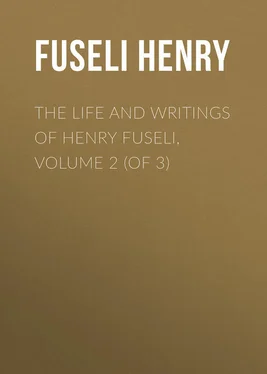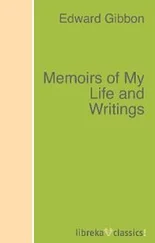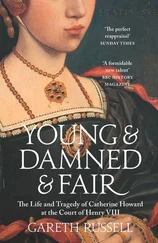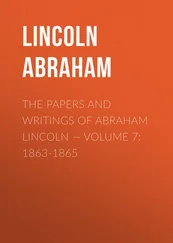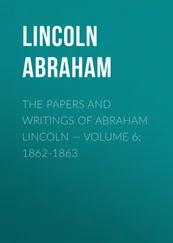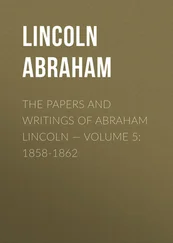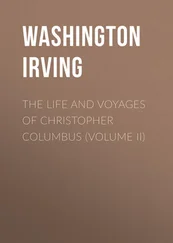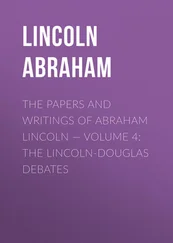Henry Fuseli - The Life and Writings of Henry Fuseli, Volume 2 (of 3)
Здесь есть возможность читать онлайн «Henry Fuseli - The Life and Writings of Henry Fuseli, Volume 2 (of 3)» — ознакомительный отрывок электронной книги совершенно бесплатно, а после прочтения отрывка купить полную версию. В некоторых случаях можно слушать аудио, скачать через торрент в формате fb2 и присутствует краткое содержание. Жанр: visual_arts, foreign_antique, foreign_prose, на английском языке. Описание произведения, (предисловие) а так же отзывы посетителей доступны на портале библиотеки ЛибКат.
- Название:The Life and Writings of Henry Fuseli, Volume 2 (of 3)
- Автор:
- Жанр:
- Год:неизвестен
- ISBN:нет данных
- Рейтинг книги:5 / 5. Голосов: 1
-
Избранное:Добавить в избранное
- Отзывы:
-
Ваша оценка:
- 100
- 1
- 2
- 3
- 4
- 5
The Life and Writings of Henry Fuseli, Volume 2 (of 3): краткое содержание, описание и аннотация
Предлагаем к чтению аннотацию, описание, краткое содержание или предисловие (зависит от того, что написал сам автор книги «The Life and Writings of Henry Fuseli, Volume 2 (of 3)»). Если вы не нашли необходимую информацию о книге — напишите в комментариях, мы постараемся отыскать её.
The Life and Writings of Henry Fuseli, Volume 2 (of 3) — читать онлайн ознакомительный отрывок
Ниже представлен текст книги, разбитый по страницам. Система сохранения места последней прочитанной страницы, позволяет с удобством читать онлайн бесплатно книгу «The Life and Writings of Henry Fuseli, Volume 2 (of 3)», без необходимости каждый раз заново искать на чём Вы остановились. Поставьте закладку, и сможете в любой момент перейти на страницу, на которой закончили чтение.
Интервал:
Закладка:
The Heroics of the elder, and the Eicones, or Picture Galleries of the elder and younger Philostratus, though perhaps not expressly written for the artist, and rather to amuse than to instruct, cannot be sufficiently consulted by the epic or dramatic artist. The Heroics furnish the standard of form and habits for the Grecian and Troic warriors, from Protesilaus to Paris and Euphorbus; and he who wishes to acquaint himself with the limits the ancients prescribed to invention, and the latitude they allowed to expression, will find no better guide than an attentive survey of the subjects displayed in their galleries.
Such are the most prominent features of ancient criticism, and those which we wish the artist to be familiar with; the innumerable hints, maxims, anecdotes, descriptions, scattered over Lucian, Aelian, Athenæus, Achilles, Tatius, Tatian, Pollux, and many more, may be consulted to advantage by the man of taste and letters, and probably may be neglected without much loss by the student.
Of modern writers on art, Vasari leads the van; theorist, artist, critic, and biographer in one. The history of modern art owes no doubt much to Vasari; he leads us from its cradle, to its maturity, with the anxious diligence of a nurse, but he likewise has her derelictions; for more loquacious than ample, and less discriminating styles than eager to accumulate descriptions, he is at an early period exhausted by the superlatives lavished on inferior claims, and forced into frigid rhapsodies and astrologic nonsense to do justice to the greater. He swears by the divinity of M. Agnolo. He tells us himself that he copied every figure of the Capella Sistina and the Stanze of Raffaello; yet his memory was either so treacherous, 1 1 There will be an opportunity to notice that incredible dereliction of reminiscence which prompted him to transfer what he had rightly ascribed to Giorgione, in the Florentine edition, 1550, to the elder Palma in the subsequent ones. See Lecture on Chiaroscuro.
or his rapidity in writing so inconsiderate, that his account of both is a mere heap of errors and unpardonable confusion; and one might almost fancy that he had never entered the Vatican. Of Correggio he leaves us less informed than of Apelles. Even Bottari, the learned editor of his work, his countryman and advocate against the complaints of Agostino Carracci and Federigo Zucchero, though ever ready to fight his battles, is at a loss to account for his mistakes. He has been called the Herodotus of our art, and if the main simplicity of his narrative, and the desire of heaping anecdote on anecdote, entitle him in some degree to that appellation, we ought not to forget, that the information of every day adds something to the authenticity of the Greek historian, whilst every day furnishes matter to question the credibility of the Tuscan.
What we find not in Vasari it is useless to search for amid the rubbish of his contemporaries or followers, from Condivi to Ridolfi, and on to Malvasia, whose criticism on the style of Lodovico Carracci and his pupils in the cloisters of St. Michele in Bosco, near Bologna, amount to little more than a sonorous rhapsody of ill applied or empty metaphors and extravagant praise; till the appearance of Lanzi, who in his 'Storia Pittorica della Italia,' has availed himself of all the information existing in his time, has corrected most of those who wrote before him, and though perhaps not possessed of great discriminative powers, has accumulated more instructive anecdotes, rescued more deserving names from oblivion, and opened a wider prospect of art than all his predecessors. 2 2 It ought not, however, to be disguised, that the history of art, deviating from its real object, has been swelled to a diffuse catalogue of individuals, who, being the nurslings of different schools, or picking something from the real establishers of art, have done little more than repeat or mimic rather than imitate, at second hand, what their masters or predecessors had found in nature, discriminated and applied to art in obedience to its dictates. Without depreciating the merits of that multitude who strenuously passed life in following others, it must be pronounced a task below history to allow them more than a transitory glance; neither novelty nor selection and combination of scattered materials, are entitled to serious attention from him who only investigates the real progress of art, if novelty is proved to have added nothing essential to the system, and selection to have only diluted energy, and by a popular amalgama to have been content with captivating the vulgar. Novelty, without enlarging the circle of fancy, may delight, but is nearer allied to whim than to invention; and an Eclectic system without equality of parts, as it originated in want of comprehension, totters on the brink of mediocrity, sinks art, or splits it into crafts decorated with the specious name of schools, whose members, authorized by prescript, emboldened by dexterity of hand, encouraged by ignorance, or heading a cabal, subsist on mere repetition, with few more legitimate claims to the honours of history than a rhapsodist to those of the poem which he recites.
The French critics composed a complete system of rules. Du Fresnoy spent his life in composing and revising general aphorisms in Latin classic verse; some on granted, some on disputable, some on false principles. Though Horace was his model, neither the Poet's language nor method have been imitated by him. From Du Fresnoy himself, we learn not what is essential, what accidental, what superinduced, in style; from his text none ever rose practically wiser than he sat down to study it: if he be useful, he owes his usefulness to the penetration of his English commentator; the notes of Reynolds, treasures of practical observation, place him among those whom we may read with profit. What can be learnt from precept, founded on prescriptive authority, more than on the verdicts of nature, is displayed in the volumes of De Piles and Felibien; a system, as it has been followed by the former students of their academy, and sent out with the successful combatants for the premium to their academic establishment at Rome, to have its efficiency proved by the contemplation of Italian style and execution. The timorous candidates for fame, knowing its rules to be the only road to success at their return, whatever be their individual bent of character, implicitly adopt them, and the consequence is, as may be supposed, that technical equality, which borders on mediocrity. After an exulting and eager survey of the wonders the place exhibits, they all undergo a similar course of study. Six months are allotted to the Vatican, and in equal portions divided between the Fierté of M. Agnolo, and the more correct graces of Raffaello; the next six months are in equal intervals devoted to the academic powers of Annibale Carracci, and the purity of the antique.
About the middle of the last century the German critics, established at Rome, began to claim the exclusive privilege of teaching the art, and to form a complete system of antique style. The verdicts of Mengs and Winkelmann became the oracles of Antiquaries, Dilettanti, and artists from the Pyrenees to the utmost North of Europe, have been detailed, and are not without their influence here. Winkelmann was the parasite of the fragments that fell from the conversation or the tablets of Mengs, a deep scholar, and better fitted to comment a classic than to give lessons on art and style, he reasoned himself into frigid reveries and Platonic dreams on beauty. As far as the taste or the instructions of his tutor directed him, he is right, whenever they are, and between his own learning and the tuition of the other, his history of art delivers a specious system and a prodigious number of useful observations. He has not, however, in his regulation of epochs, discriminated styles, and masters, with the precision, attention, and acumen, which from the advantages of his situation and habits might have been expected; and disappoints us as often by meagreness, neglect, and confusion, as he offends by laboured and inflated rhapsodies on the most celebrated monuments of art. To him Germany owes the shackles of her artists, and the narrow limits of their aim; from him they have learnt to substitute the means for the end, and by a hopeless chace after what they call beauty, to lose what alone can make beauty interesting, expression and mind. The works of Mengs himself are no doubt full of the most useful information, deep observation, and often consummate criticism. He has traced and distinguished the principles of the moderns from those of the ancients; and in his comparative view of the design, colour, composition, and expression of Raffaello, Correggio and Tiziano, with luminous perspicuity and deep precision, pointed out the prerogative or inferiority of each. As an artist he is an instance of what perseverance, study, experience and encouragement can achieve to supply the place of genius.
Читать дальшеИнтервал:
Закладка:
Похожие книги на «The Life and Writings of Henry Fuseli, Volume 2 (of 3)»
Представляем Вашему вниманию похожие книги на «The Life and Writings of Henry Fuseli, Volume 2 (of 3)» списком для выбора. Мы отобрали схожую по названию и смыслу литературу в надежде предоставить читателям больше вариантов отыскать новые, интересные, ещё непрочитанные произведения.
Обсуждение, отзывы о книге «The Life and Writings of Henry Fuseli, Volume 2 (of 3)» и просто собственные мнения читателей. Оставьте ваши комментарии, напишите, что Вы думаете о произведении, его смысле или главных героях. Укажите что конкретно понравилось, а что нет, и почему Вы так считаете.
